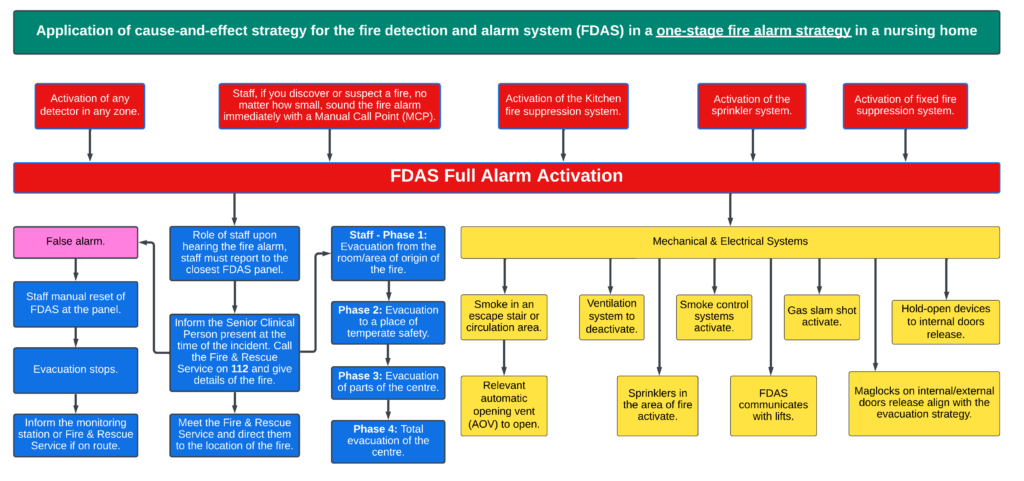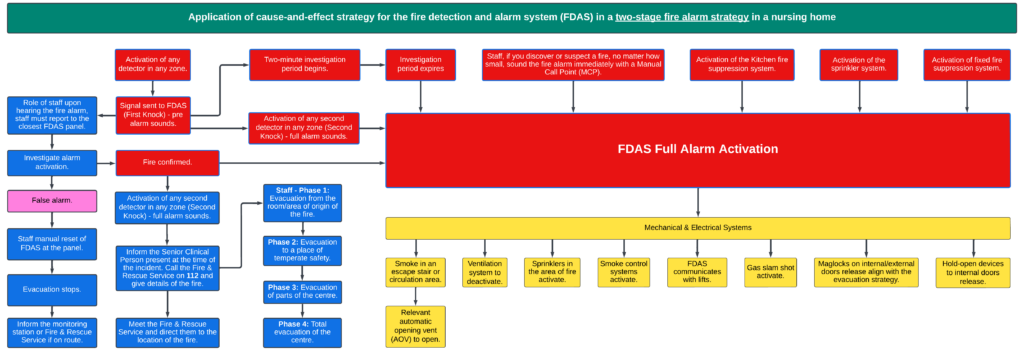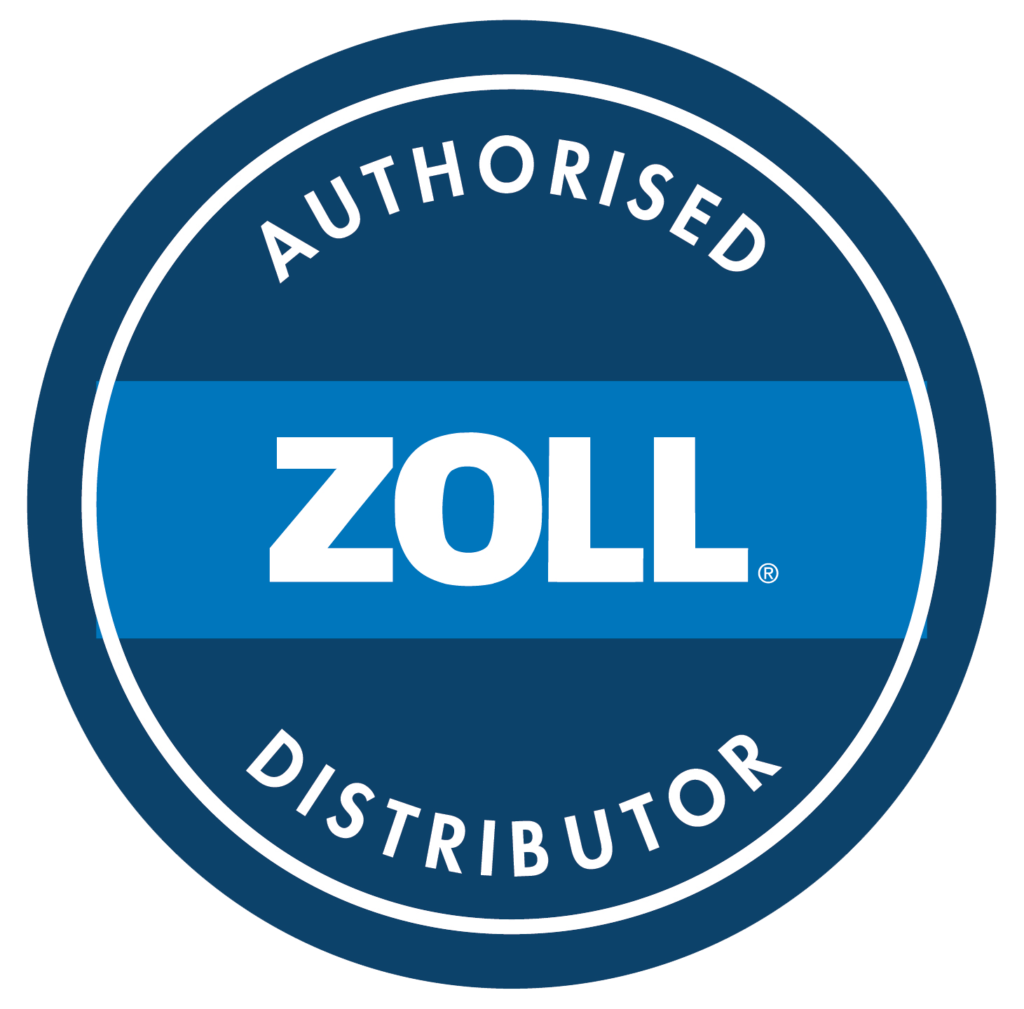Practical Application of Two-Stage Fire Alarm Strategy in Comparison to a One-Stage Strategy.
At Phoenix STS, our unwavering commitment to advancing fire safety through innovative solutions and strict adherence to standards is a cornerstone of our work. Today, we delve into the critical differences between one-stage and two-stage fire alarm strategies, particularly in nursing homes, and how they comply with Irish Standard I.S. 3218:2013+A1:2019.
One-Stage Fire Alarm Strategy
A one-stage fire alarm strategy is straightforward and immediate when responding to fire detection. Here’s how it works:
- Activation Triggers:
- Automatic detection in any zone.
- Manual activation via Manual Call Points (MCPs).
- Activation of kitchen fire suppression, sprinkler, and fixed fire suppression systems.
- Full Alarm Activation:
- Immediate response to fire detection, ensuring prompt evacuation and safety measures.
- False Alarm Protocol:
- Staff at the fire detection and alarm system (FDAS) panel reset the system.
- Evacuation halts upon confirmation of a false alarm.
- Notify monitoring stations or Fire & Rescue Services if on route.
- Staff Roles and Responsibilities:
- Clear guidelines for staff to report to the nearest FDAS panel.
- Senior Clinical Person to inform and guide Fire & Rescue Service.
- Phased Evacuation Process:
- Phase 1: Evacuation from the room/area of origin.
- Phase 2: Evacuation to a place of temporary safety.
- Phase 3: Evacuation of parts of the centre.
- Phase 4: Total evacuation of the centre.
- Integration with Mechanical & Electrical Strategy:
- Automatic deactivation of ventilation systems and activation of smoke control systems.
- Activation of gas slam-shuts.
- Communication with lifts and release of maglocks on doors per the evacuation strategy.
Visual Representation
Below is a visual representation of a one-stage fire alarm strategy, illustrating the cause-and-effect strategy for the FDAS in a nursing home:

Two-Stage Fire Alarm Strategy
A two-stage fire alarm Strategy is designed for larger or more complex buildings, offering a more controlled response to fire detection:
- Activation Triggers:
- Like the one-stage strategy, automatic detection, manual activation, and activation of suppression systems are included.
- Investigation Period:
- A two-minute investigation period begins upon initial detection (First Knock).
- The strategy escalates to a full alarm if a second detector is activated, the timer runs out, or the fire is confirmed with an MCP (Second Knock).
- Full Alarm Activation:
- This strategy is like the one-stage strategy, with an added investigation period to reduce false alarms and unnecessary evacuations.
- False Alarm Protocol:
- Manual reset and notification procedures are like the one-stage strategy.
- Staff Roles and Responsibilities:
- Similar roles, emphasising investigation during the initial alarm stage.
- Phased Evacuation Process:
- A phased evacuation process is like a one-stage strategy.
- Integration with Mechanical & Electrical Strategy:
- Similar integration with ventilation, smoke control, and other systems.
Visual Representation
Below is a visual representation of a two-stage fire alarm strategy, illustrating the cause-and-effect strategy for the FDAS in a nursing home:

Compliance with I.S. 3218:2013+A1:2019
Both strategies adhere to the stringent requirements of I.S. 3218, ensuring:
- Early Detection and Alarm: Utilising automatic and manual detection systems.
- Zoning and Identification: Clear division into fire alarm zones for effective response.
- Integrated Evacuation Strategy: Phased evacuation aligned with fire safety protocols.
- Mechanical and Electrical Strategy Coordination: Seamless interaction with other fire protection systems.
- Manual and Automatic Controls: Flexibility and reliability in emergencies.
Advantages of a Two-Stage Strategy Over a One-Stage Strategy
- Controlled Response:
- The two-stage strategy allows for a more measured approach to fire detection, reducing the likelihood of unnecessary full-scale evacuations.
- This is crucial in nursing homes where occupants may have limited mobility.
- Investigation Period:
- The initial two-minute investigation period (First Knock) allows staff to assess the situation before escalating to a full alarm, thereby minimising false alarms and disruptions.
- Reduced Staff Fatigue:
- By minimising unnecessary evacuations, staff fatigue is reduced.
- False alarms in a one-stage strategy can make staff desensitised, potentially slowing their response time during an emergency.
- Efficient Use of Resources:
- The investigation period allows for better allocation of emergency resources, ensuring that the Fire & Rescue Service is called out only when necessary.
Importance of Reporting to the Closest Fire Panel
- Speed of Response:
- By reporting to the nearest FDAS panel, staff can quickly identify the location of the fire, enabling a faster and more coordinated response.
- Accurate Information:
- Immediate access to the FDAS panel provides accurate real-time information about the fire’s location and status, facilitating better decision-making during an emergency.
- Minimising Evacuation Delays:
- Ensuring staff reports are promptly received helps execute the evacuation process without unnecessary delays, which protects residents’ lives.
At Phoenix STS, our comprehensive understanding of fire safety standards and commitment to implementing effective fire detection and alarm strategies ensure that nursing homes are well-protected, compliant with regulations, and prepared for emergencies.
Click here for more information and to see the complete list of consultancy services we offer to nursing homes.









